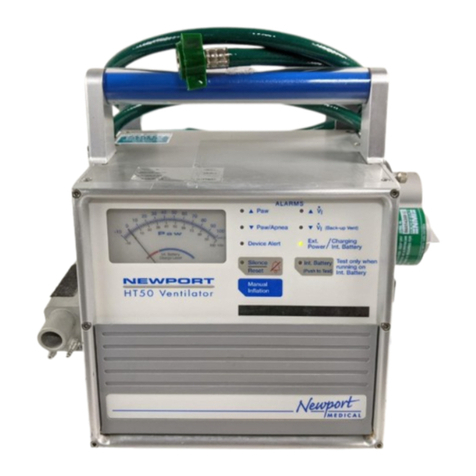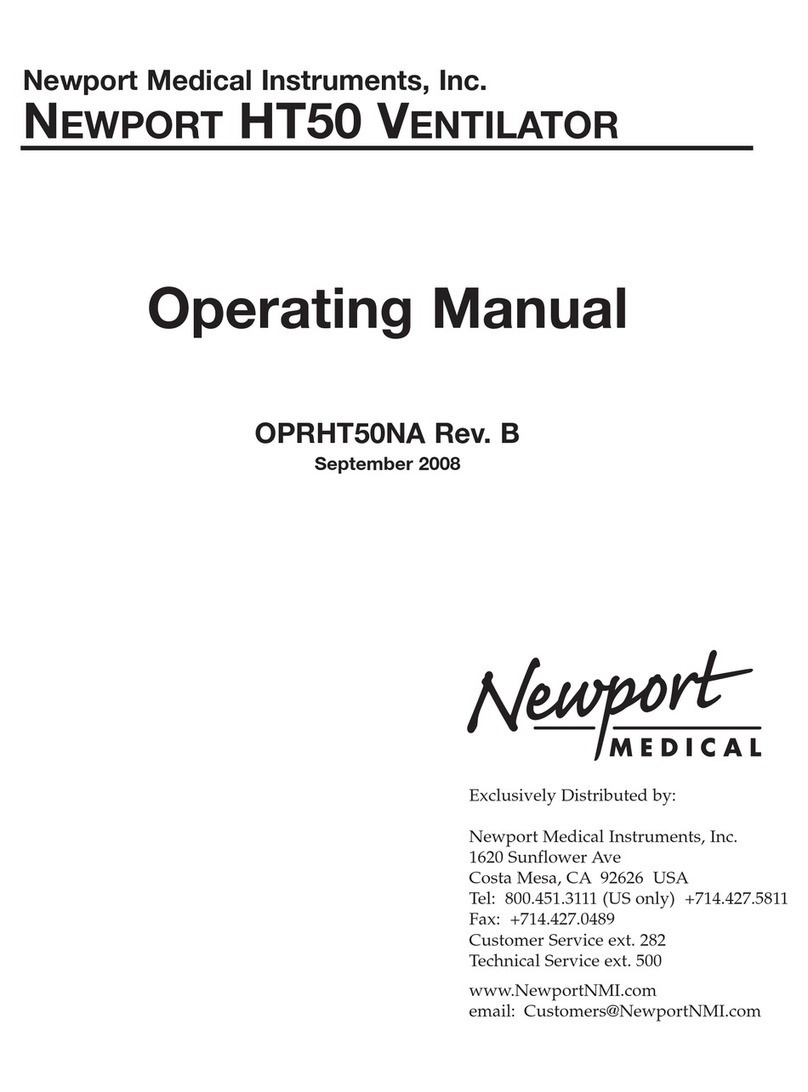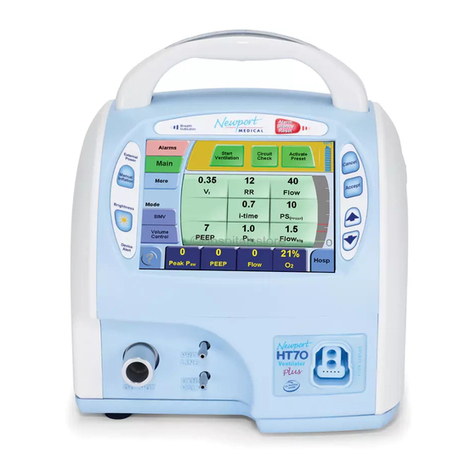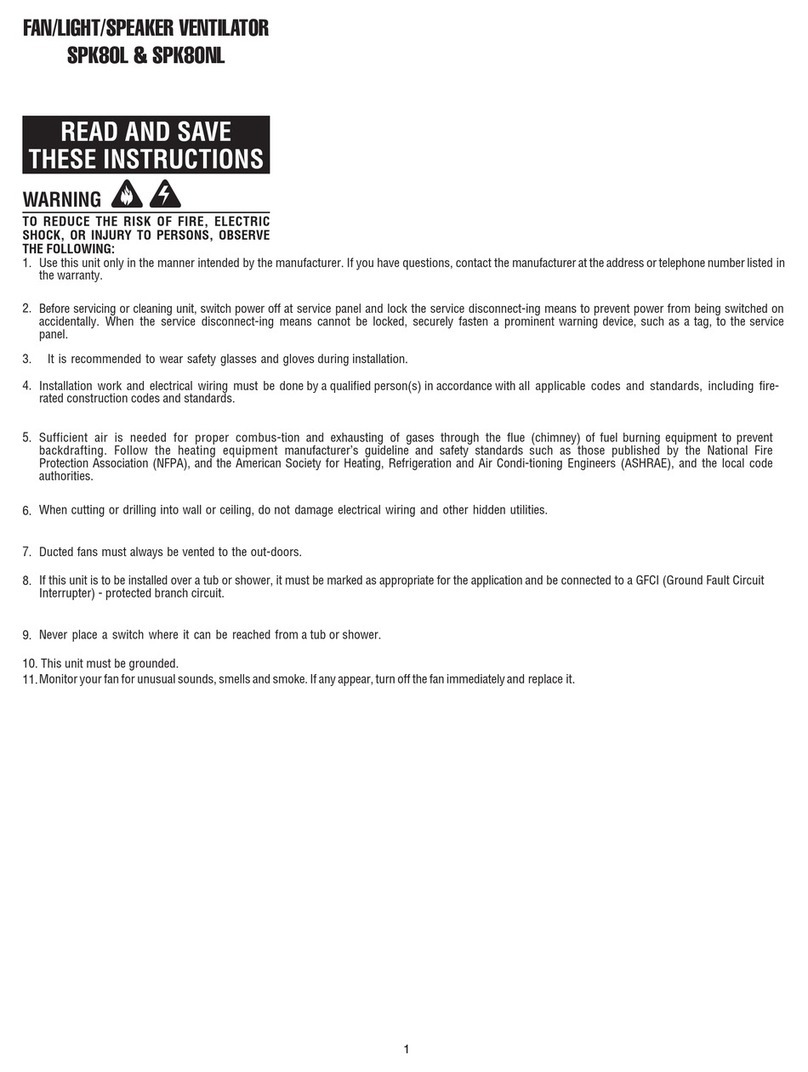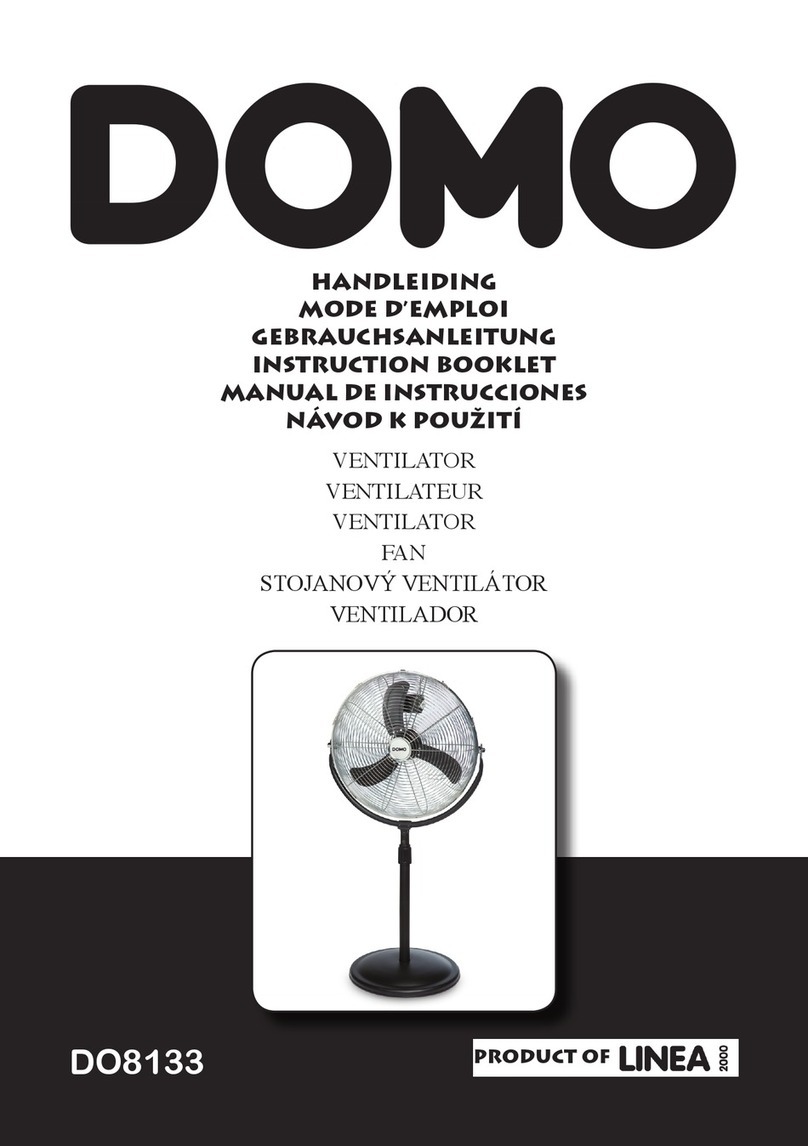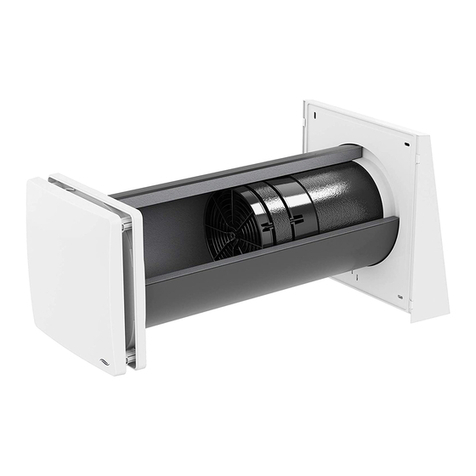Newport Medical Instruments HT70 User manual

Newport Medical Instruments, Inc.
Newport HT70 Series Ventilator
Service Manual
SERHT70-2 Rev. B
05/14
Newport Medical Instruments, Inc.
1620 Sunflower Ave.
Costa Mesa, CA 92626
Email: venttechsupport@covidien.com
0344

Page Left Intentionally Blank

OPR360U A0509
5-1
5
OPR360U A0509
5-1
5
SERHT70-2 B0514
Contact Information
Contact Information
Telephone:
800-255-6774 option #4 & option #2
Operational Hours:
Days: Monday through Friday
Hours: 8:00 am to 5:00 pm
Emergency After-hours: 24-Hour Clinical and Technical Support
Email:
venttechsupport@covidien.com
Service Center Address:
Covidien
2824 Airwest Blvd.
Plainfield, IN 46168
Newport Medical Instruments
1620 Sunflower Avenue
Costa Mesa, CA 92626, USA
EC REP
Authorized European Representative
Emergo Europe
Molenstraat 15
2513 BH, The Hague
The Netherlands

OPR360U A0509
5-1
5
OPR360U A0509
5-1
5
Table of Contents
SERHT70-2 B0514
1 Introduction
Brief Device Description.......................................................... 1-1
Intended Use ........................................................................... 1-3
Ventilator Configurations ......................................................... 1-4
Warnings, Cautions, Notes...................................................... 1-4
2 Specifications
Front Panel Buttons - Symbols Version .................................. 2-1
Miscellaneous Reference Symbols ......................................... 2-2
Controls / Monitors.................................................................. 2-2
Monitor Data Selections.......................................................... 2-3
Front Panel Membrane Buttons and Indicators ...................... 2-4
Alarms ............................................................................... 2-4
User Adjustable ................................................................. 2-5
Automatic .......................................................................... 2-5
Hardware Requirements.......................................................... 2-7
Environment............................................................................. 2-8
Size and Weight....................................................................... 2-8
Factory Default Parameters..................................................... 2-9
Miscellaneous ......................................................................... 2-9
(optional) Air / Oxygen Entrainment Mixer .............................. 2-9
(optional) Low Flow Oxygen Reservoir.................................... 2-9
Regulatory and Agency Standards ........................................2-10
3 Theory of Operation
Device Description .................................................................. 3-1
Functional Subsystems Overview ........................................... 3-2
Pneumatics System........................................................... 3-2
Electronics System............................................................ 3-3
Ventilation Functions Overview ............................................... 3-7
Modes of Ventilation.......................................................... 3-7
Breath Types.................................................................... 3-10
4 Cleaning and Maintenance
Cleaning and Disinfecting........................................................ 4-1
Ventilator ............................................................................... 4-1
Accessories ............................................................................. 4-2
Low Flow Oxygen Reservoir.............................................. 4-2
Air/Oxygen Entrainment Mixer .......................................... 4-2
Reusable Breathing Circuits.................................................... 4-3

OPR360U A0509
5-1
5
OPR360U A0509
5-1
5
OPR360U A0509
5-1
5
SERHT70-2 B0514
Table of Contents
Air Intake Filter......................................................................... 4-3
Proximal Inline Filter ................................................................4-4
Maintenance Guidelines ..........................................................4-4
Routine Maintenance......................................................... 4-4
6 Month Maintenance........................................................ 4-5
12 Month Maintenance ...................................................... 4-5
24 Month Maintenance...................................................... 4-5
15,000 Hour Maintenance .................................................4-6
General Warnings ....................................................................4-6
Factory Maintenance or Repair ............................................... 4-7
Repacking/Return Information ................................................ 4-7
5 Service and Repair
General Information................................................................. 5-1
Tools Required......................................................................... 5-1
Removal and Replacement of the Rear Panel Assembly........ 5-2
Rear Panel Assembly ........................................................ 5-2
Single Board Computer (SBC) Assembly.......................... 5-4
Main Control Board (MCB) Assembly ...............................5-5
Power Switch Assembly ....................................................5-6
Removal and Replacement of Top Case Assembly ................ 5-7
Inlet Air Filter...................................................................... 5-7
Fan Filter and Guard..........................................................5-8
Top Case Assembly........................................................... 5-9
Fan Assembly ...................................................................5 -11
Backup Battery.................................................................5 -11
Display Board .................................................................. 5-12
Chassis Assembly ........................................................... 5-13
Buzzer Assembly..............................................................5-14
LCD/Touch Screen Display Assembly..............................5-14
Handle Assembly............................................................. 5-15
Membrane Switch Assemblies ........................................ 5-16
Removal and Replacement of the Base Assembly ................5-17
Speaker Assembly............................................................5-17
Solenoid Valve Group Assembly ..................................... 5-18
On/Off Valve .................................................................... 5-20
Safety Valve ..................................................................... 5-20
Pump Assembly............................................................... 5-20
Manifold Assembly .......................................................... 5-22

OPR360U A0509
5-1
5
OPR360U A0509
5-1
5
OPR360U A0509
5-1
5
SERHT70-2 B0514
Table of Contents
6 Performance Verification
General Information................................................................. 6-1
Test Equipment........................................................................ 6-1
Quick Check ............................................................................ 6-1
Introduction ....................................................................... 6 -1
Pre-test Inspection ............................................................ 6-2
Setup and Circuit Check ................................................... 6-2
Standard Test Settings......................................................6-4
Quick Check Procedure ....................................................6-5
Calibration Procedures............................................................6-8
Introduction .......................................................................6-8
Equipment Setup...............................................................6-8
Pressure Transducer Calibration .......................................6-8
Motor Speed Calibration ..................................................6 -11
Pump Leak Calibration .....................................................6 -11
FiO2Sensor Calibration................................................... 6-12
LCD Calibration ............................................................... 6-13
Flow Sensor Board GR-PCB3212A Calibration............... 6-13
Operational Verification Procedure (OVP) ............................. 6-13
Electrical Safety Test (EST) ............................................. 6-13
Equipment Setup............................................................. 6 -13
Front Panel Test............................................................... 6-13
AC Power Loss and Shutdown Buzzer Alarm Test.......... 6-14
Circuit Check ................................................................... 6 -14
LED/Solenoid Check ....................................................... 6-14
Pressure Relief Valve Test ................................................6-17
Pressure Verification Test .................................................6-17
System Leak Test ............................................................ 6-18
Flow Measurement .......................................................... 6-18
Emergency Intake Valve Test........................................... 6 -19
Patient Effort Indicator Test ............................................. 6-19
Pressure Control and PEEP Test ..................................... 6-20
FiO2Verification Test ....................................................... 6-20
Volume Control Test ........................................................ 6-21
Manual Inflation Test........................................................ 6-22
Pressure Alarm Test ........................................................ 6-22
Integrated Battery System Check ................................... 6-23
7 Troubleshooting
Table 7.1 Troubleshooting Guide ..............................................7-1

OPR360U A0509
5-1
5
OPR360U A0509
5-1
5
OPR360U A0509
5-1
5
SERHT70-2 B0514
Table of Contents
8 Diagrams and Assembly Part Lists
Diagram 8.1 - Pneumatics System .......................................... 8-1
Diagram 8.2 - Electronics System........................................... 8-2
Diagram 8.3 - HT70 Plus Exploded View ................................8-3
Diagram 8.4 - Base Assembly.................................................8-4
Diagram 8.5 - Case Assembly (1 of 7)..................................... 8-5
Diagram 8.5 - Case Assembly (2 of 7) ....................................8-6
Diagram 8.5 - Case Assembly (3 of 7) .................................... 8-7
Diagram 8.5 - Case Assembly (4 of 7)..................................... 8-8
Diagram 8.5 - Case Assembly (5 of 7) ....................................8-9
Diagram 8.5 - Case Assembly (6 of 7) .................................. 8-10
Diagram 8.5 - Case Assembly (7 of 7) ...................................8 -11

Page Left Intentionally Blank

Introduction
Section 1:
Introduction


OPR360U A0509
5-1
5
OPR360U A0509
5-1
5
Introduction
Section 1:
Brief Device Description.................................... 1-1
Intended Use.......................................................1-3
Ventilator Configurations ..................................1-4
Warnings, Cautions, Notes................................1-4

OPR360U A0509
5-1
5
Page Left Intentionally Blank

OPR360U A0509
5-1
5
OPR360U A0509
5-1
5
SERHT70-2 B0514 1-1
Introduction 1
Brief Device Description
The Newport HT70 family of ventilators are state of the art ventilators
that combine ruggedness, ease of use and clinical proficiency with
exceptional mobility to provide ventilatory support for infant, pediatric
and adult patients in emergency care, transport, subacute care and
home care applications. It is also ideal for emergency preparedness
applications.
The compact, lightweight HT70 ventilator is built for hard work with a
durable polymer exterior and robust overall design that stands up to
harsh environments.
The HT70 Ventilator defines ease of use with all essential controls at
your fingertips using a simple membrane button and touch screen
combination. There are no complicated menus or difficult sequences to
follow in order to make necessary adjustments for common operations.
A three-tiered management domain system makes it very easy for
caregivers to manage all controls while providing quick access to
the more essential elements in transport situations and significantly
enhanced safety and simplicity in the homecare environment.
Sophisticated Clinical Capabilities
In addition to its durability and ease of use, the HT70 ventilator offers
the complete array of clinical capabilities needed for managing
patients.
The twin micro-piston pump’s ability to deliver a variable flow enables
the HT70 to provide a full range of operating modes and breath types
with servo-controlled, leak-compensated PEEP. Leak compensation
helps to improve triggering and avoid auto-triggering when a leak is
present. The HT70 may be used with an endotracheal tube, tracheal
tube, face mask, nasal mask or prongs, or mouthpiece.
There are 3 models for the HT70 series of ventilators:
HT70S HT70 Basic for use when Pressure Support is not needed.
HT70 HT70 Classic, adds Pressure Support and related
parameters and Trends screen
HT70PM HT70 Plus, adds on-airway flow sensor option with
graphics, flow trigger and exhaled volumes
The HT70 Basic and Classic models provide monitoring of inspiratory
tidal volume (every breath), inspiratory minute volume, total
respiratory rate, peak pressure, mean pressure and baseline (PEEP)
pressure. Real-time patient circuit pressure is displayed at all times

OPR360U A0509
5-1
5
OPR360U A0509
5-1
5
OPR360U A0509
5-1
5
SERHT70-2 B0514
1-2
1Introduction
on the airway pressure gauge on the face panel. A comprehensive
alarm system is built-in to alert the user to violations of user-set or
ventilator safety limits. An optional built-in oxygen sensor allows
monitoring of O2with high and low O2alarms.
The HT70 Plus model adds an on-airway flow sensor with onscreen
graphics, exhaled tidal and minute volume monitoring/alarms, and flow
trigger. This manual describes the HT70 Plus model and will denote
features that are not available on the HT70 and HT70S models.
Gas delivery to the patient may be enriched with oxygen (0.21-1.00)
using either the optional Air Oxygen Entrainment (50 psi) Mixer or
optional Low Flow Oxygen Reservoir.
Exceptional Mobility
The ventilator’s unique design provides maximum mobility and safety
for short or long distance transport of critically ill patients and also
for patients who are going about their normal activities of daily life.
This exceptional mobility is derived from two sources: Newport’s
patented, power conserving dual-micro-piston technology which
eliminates the need for an external compressed gas source, and the
Internal Dual Battery System which allows virtually continuous use
from battery power through hot-swappable technology.
The HT70’s micro-pistons use a fraction of the power that is consumed
by turbines and blowers. This enables longer battery use time. Our
patented system also uses considerably less supplemental oxygen
than turbine or blower systems, again improving mobility for transport
or homecare use. The superior technology of our micro-piston system
over the turbine and blower systems allow the HT70 to ventilate safely
over a wide range of environmental conditions and altitudes.
The HT70’s twin micro-piston internal pump is made of mechanically
moving components. As with any other gas delivery system
made of moving components, it may emit a minor level of noise
during operation. This is not a malfunction and does not affect the
performance of the ventilator.
The Internal Dual Battery System consists of two independent but
coordinated lithium ion batteries, the Power Pac battery, located on
the back of the ventilator and the Backup Battery inside the ventilator.
The Internal Dual Battery System can provide up to 10 hours of
operation at standard settings when new and fully charged. This
system assures continued support during transport, daily activities or
power outages.

OPR360U A0509
5-1
5
OPR360U A0509
5-1
5
SERHT70-2 B0514 1-3
Introduction 1
The detachable Power Pac is ‘hot-swappable’. That is, if more battery
time is needed, a depleted Power Pac can easily be removed from
the back of the HT70 and replaced with a recharged Power Pac
without interrupting ventilation. No tools are needed. The secondary
Backup Battery maintains operation without interruption when the
Power Pac is swapped out and also provides a minimum of 30
minutes of full operation when all other power sources are depleted.
The Power Pac weighs two pounds and is charged anytime the
ventilator is connected to an external power source (AC or DC). It
can also be charged separately.
The HT70 may be operated from a variety of AC (100-240 VAC @ 50 /
60 Hz) or DC (12-24 VDC) external power sources or from the Internal
Dual Battery System. The optional DC Auto Lighter Power Adapter
accessory enables connection to an automobile-type DC outlet. Any
time the ventilator is connected to external power, both batteries in
the Internal Dual Battery System are charging, whether or not the
ventilator is in use.
Travel Certified
The HT70 has been tested for and meets requirements for use in
helicopter and fixed wing transport and for use on commercial airlines.
Before traveling, be sure to speak with your airline representative about
their particular concerns and clear all of your equipment with them well
before your departure. The labeling that the FAA requires to be on the
ventilator is located on the bottom of the HT70.
Intended Use
Newport HT70 family of ventilators is intended to provide continuous
or intermittent positive pressure mechanical ventilatory support for
the care of individuals who require mechanical ventilation through
invasive or noninvasive interfaces.
Specifically, the Newport HT70 family of ventilators is applicable
for infant, pediatric and adult patients greater than or equal to 5 kg
(11 lbs) in hospital, sub-acute, emergency department, and home
care environments as well as for transport and emergency response
applications.
NOTE: Federal law (US) restricts sale by or on the order of a physician.

OPR360U A0509
5-1
5
OPR360U A0509
5-1
5
OPR360U A0509
5-1
5
SERHT70-2 B0514
1-4
1Introduction
Ventilator Configurations
Newport Medical offers five configurations for the 3 models in the
HT70 family of ventilators. See Table 1. In addition, the front control
panel labeling is available in various languages and regional power
cords, i.e. North American, European, etc., can be specified. See
your Newport Medical Representative for details.
Table 1
Warnings, Cautions, and Notes
Please review all WARNINGS and Cautions outlined in this manual
before operating the ventilator.
Use of the product requires full understanding and strict observation
of all sections of these instructions. The equipment is only to be used
for the purposes specified under Intended Use and in conjunction
with appropriate patient observation and monitoring. Observe
all WARNINGS and Cautions that appear in this manual and on
equipment labels.
WARNING A warning describes a condition that can cause injury.
Part Number Description Distinguishing Features
HT70PM HT70 Plus
Full featured with Flow sensor,
graphics and built-in oxygen monitor
with alarms. Compatible with optional
plug and play pulse oximeter
HT70 HT70, w/o
Oxygen Sensor
Classic features
No built-in oxygen monitor
HT70M HT70, with
Oxygen Sensor
Classic features
Includes built-in oxygen monitor with
alarms
HT70S HT70, Basic w/o
Oxygen Sensor
Classic features except:
• No Pressure Support or Pressure
Support parameters
• No Trends
• No built-in oxygen monitor
HT70SM HT70, Basic with
Oxygen Sensor
Classic features except:
• No Pressure Support or Pressure
Support parameters
• No Trends
Includes built-in oxygen monitor with
alarms

OPR360U A0509
5-1
5
OPR360U A0509
5-1
5
SERHT70-2 B0514 1-5
Introduction 1
Caution: A caution describes a condition that can cause damage to
equipment.
NOTE: A note emphasizes information that is important or convenient.
General Notes
The Newport HT70 has been designed to accommodate connectivity
with nurse call/monitoring systems. Because it is not possible to
anticipate every configuration of hardware and software associated
with nurse call/monitoring system, it is the user’s responsibility to
confirm proper functionality of the system when used in conjunction
with the HT70. Verification of alarms, alerts and patient data
transmissions is required. If the system performance is not as
expected, contact Newport Medical Technical Support for assistance
troubleshooting the set-up. Do not use the HT70 ventilator with a
nurse call/monitoring system until the functionality of the ventilator/
system combination has been confirmed.
General Cautions
Do not place liquids on or near the ventilator.
Damage can occur if the HT70 is exposed to extreme temperatures.
Do not store the HT70 in areas where it may be exposed to
temperatures below -40° C (-40° F) or above 65° C (149° F).
To avoid the risk of electric shock, the ventilator should not be
opened by anyone other than an approved service provider.
General Warnings
The design of the HT70 ventilator, the Operating and Service
manuals, and the labeling on the ventilator take into consideration
that the purchase and use of the equipment is restricted to trained
professionals, and that certain inherent characteristics of the
ventilator are known to the operator. Instructions, warnings and
caution statements are therefore limited to the specifics of the HT70.
This manual excludes references to various hazards which are
obvious to medical professionals and operators of this equipment
including consequences of product misuse, and potential adverse
effects in patients with abnormal conditions.
Transport of patients with the HT70 requires that medical staff
have a good working knowledge of the ventilator’s use and

OPR360U A0509
5-1
5
OPR360U A0509
5-1
5
OPR360U A0509
5-1
5
SERHT70-2 B0514
1-6
1Introduction
problem resolution. Proper emergency backup equipment must be
immediately available during transport.
Product modification or misuse can be dangerous. Newport Medical
Instruments, Inc. disclaims all liability for the consequences of
product alterations or modifications, as well as for the consequences
which might result from the combination of this ventilator with other
products, whether supplied by Newport or by other manufacturers,
unless such a combination has been specifically endorsed by
Newport Medical. There is a risk of explosion if used in the presence
of flammable anesthetics.
A patient connected to a ventilator requires the constant attention of
trained caregivers to the patient’s condition.
Ventilator alarms are a critical element in the safety net of patient
care. It is extremely important for patient safety that caregivers
immediately identify and correct alarm violations.
Always have an alternate power source and means of ventilation
available when the ventilator is in use so that they are easy to access
in case of a mechanical or system problem.
If a fault is detected in the ventilator and its life support functions are
in doubt, immediately discontinue use; use an alternative method of
ventilation until the fault has been corrected. Contact your service
provider immediately.
Do not block the Emergency Gas Intake (on the bottom panel) or the
Fresh Gas Intake Port (on the right side panel).
Always use appropriate monitors to ensure sufficient oxygenation
and ventilation (such as a pulse oximeter and/or a capnograph) when
the HT70 Ventilator is in use on a patient.
The optional Air/Oxygen Entrainment Mixer and Low Flow Oxygen
Reservoir are designed to operate with medical grade oxygen.
Ensure that the oxygen source is not empty before and during
the use of the optional Air/Oxygen Entrainment Mixer or Low Flow
Oxygen Reservoir.
When the optional Air/Oxygen Entrainment Mixer is secured in place,
ensure that the oxygen supply is enabled prior to powering the HT70
on to avoid putting stress on the internal pump and compromising
gas delivery to the patient.

OPR360U A0509
5-1
5
OPR360U A0509
5-1
5
SERHT70-2 B0514 1-7
Introduction 1
Calibrated oxygen monitoring at clinically appropriate levels is
required for patient safety when supplemental oxygen is in use. The
optional built-in oxygen sensor on the HT70 allows High and Low O2
alarms to be enabled which can be used to assure proper oxygen
delivery.
Always plug the HT70 into an external power supply source whenever
it is available, even when HT70 is not in use, to keep the Internal
Dual Battery System fully charged and to ensure best battery
performance. Check battery capacity on the front panel before
detaching from external power.
When installing a replacement Power Pac during battery operation,
always ensure that the charge level LED on the replacement pack is
green, indicating 90% or higher charge level.
Always ensure that the green External Power LED lights after
connecting the ventilator to an external AC or DC power source.
To maintain grounding integrity when using AC power, only connect
to properly grounded receptacles.
Use only the Newport supplied AC Power Supply (p/n PWR3204P)
with the HT70 ventilator and HT70 Power Pac (p/n BAT3271A).
Always disconnect the external power supply prior to servicing.
After servicing the HT70, it must pass the Operational Verification
Procedure (OVP) before it is returned to patient use. See section 6 of
the HT70 Service Manual.
Do not use electrically conductive breathing circuits. Always use
clean and dry breathing circuits.
Always use a clean, dry filter in the following locations: a standard
bacteria filter on the gas output, a prox line (bacteria) filter on the
proximal pressure tubing and an intake (bacteria) filter behind the
filter cover.
Adding attachments or other components or sub-assemblies to the
ventilator breathing circuit system can increase the patient’s work of
breathing and/or add resistance to patient exhalation.
Always ensure that the audible alarm loudness level is set at a volume
that can be heard by the caregiver. Do not use the ventilator in an
environment where audible alarms cannot be heard by the caregivers.

OPR360U A0509
5-1
5
OPR360U A0509
5-1
5
OPR360U A0509
5-1
5
SERHT70-2 B0514
1-8
1Introduction
The functioning of this machine may be adversely affected by the
operation of other medical equipment, such as high frequency
surgical(diathermy) equipment, defibrillators or short-wave therapy
equipment in the vicinity.
This device has undergone EMC testing and found to be in
conformance with IEC 60601-1-2:2001 and meets the requirement
of CISPR11:2004 (Class B), IEC 61000-3-2:2006, and IEC 61000-
3-3:1955 + A1:2001 + A2:2005. These requirements are designed
to provide reasonable protection against harmful interference in a
typical medical installation, as well as in homecare environments.
The equipment generates, uses and can radiate radio frequency
energy and, if not installed and used in accordance with these
instructions, may cause harmful interference to other devices in the
vicinity. However, there is no guarantee that interference will not
occur in a particular installation. If this equipment does cause harmful
interference with other devices, which can be determined by turning
the equipment off and on, the user is encouraged to try to correct the
interference by one or more of the following measures;
• Reorient or relocate the receiving device.
• Increase the separation between the equipment.
• Connect the equipment into an outlet on a circuit different from
that to which the devices(s) is connected.
• Consult the manufacturer or eld service technician for help.
Copyright Information
© Copyright 2012 Newport Medical Instruments, Inc. All rights
reserved. Newport HT70 Ventilator is manufactured in accordance
with Newport Medical Instrument, Inc. proprietary information and is
protected under U.S. Patent # 7,654,802.
This manual suits for next models
2
Table of contents
Other Newport Medical Instruments Fan manuals
Popular Fan manuals by other brands
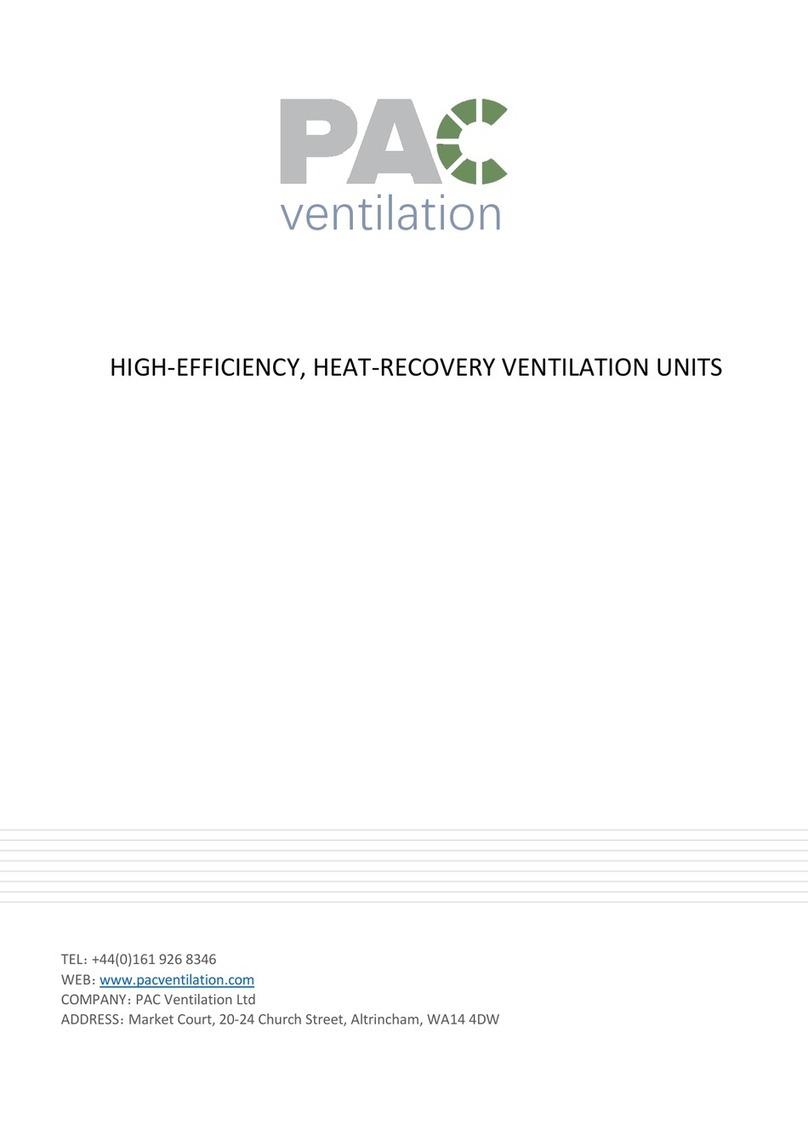
PAC
PAC PAC-350WM Installation, operation & maintenance instructions
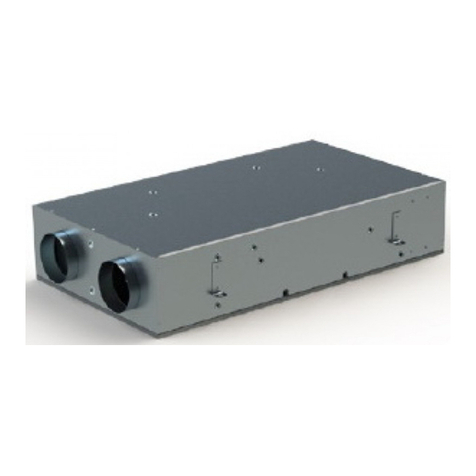
Aereco
Aereco DXR Disassembly instructions
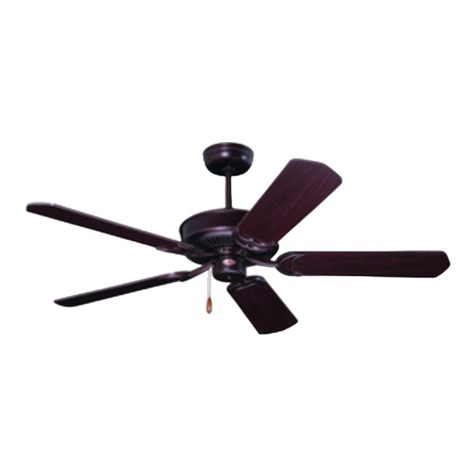
Emerson
Emerson NORTHWIND CF705AB03 owner's manual

Vallox
Vallox TSK Multi 50 Series Instructions for use and maintenance

LUCCI Air
LUCCI Air AIRFUSION HAVANA manual
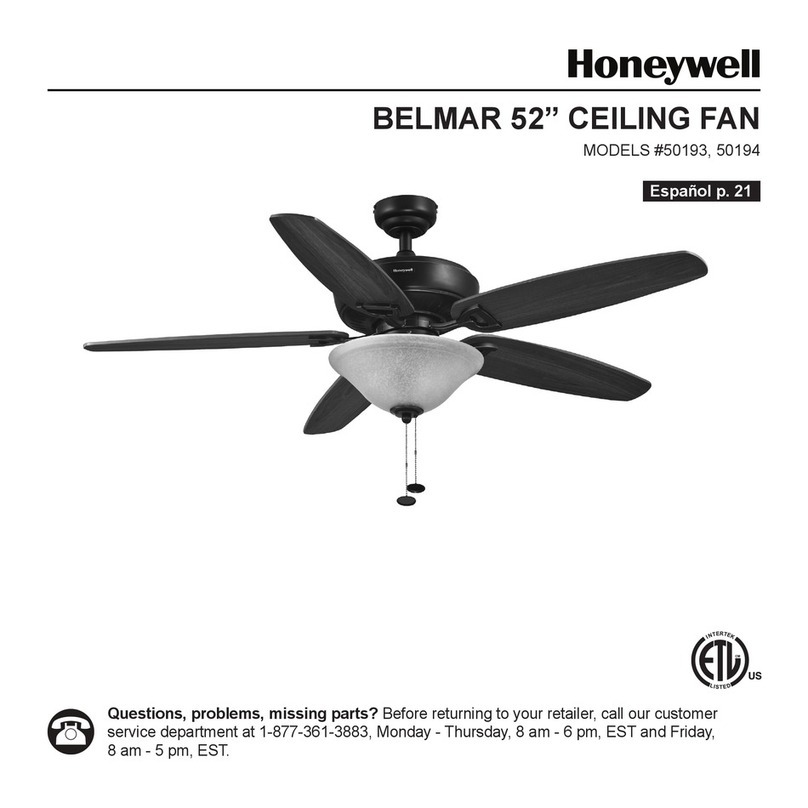
Honeywell
Honeywell BELMAR manual

Fantech
Fantech PB110L7 Installation and maintenance manual

Honeywell
Honeywell HO-5500RE User instructions

Aereco
Aereco VAM VES 250 installation instructions
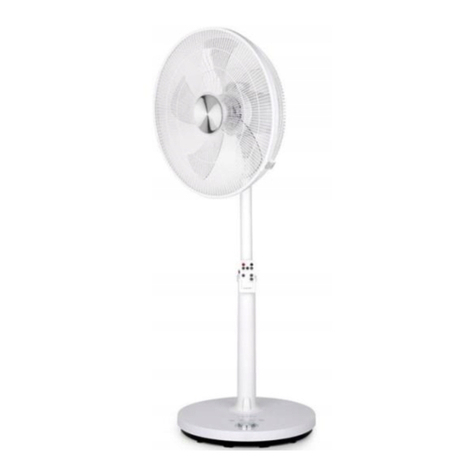
Klarstein
Klarstein Standventilator manual
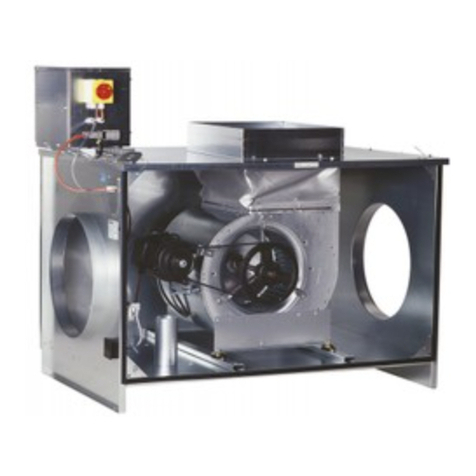
aldes
aldes VEC micro-watt Assembly instructions

Ruck Ventilatoren
Ruck Ventilatoren DVA Series Assembly instruction
